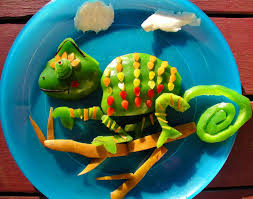Give Your Children 5-A-Day: The Art Of Disguising Vegetables
Getting your child to eat five fruit and vegetables a day can be a battle though but you should never admit defeat. Encouraging your child to swap high-fat and sugary snacks for fruit and vegetables can save you money in the long run and greatly benefit their health.
Try these ideas to get your kids to eat fruit and vegetables.
- Peel, pre-cut and cling-wrap fruit into manageable pieces for lunchboxes.
- Fruit kebabs are fun—use a variety of coloured fruit such as melon, strawberries, pineapple and kiwi fruit.
- Blend fruit into a smoothie by zizzing up a banana with some frozen mixed berries and a dollop of yogurt—this makes a nutritious drink.
- Disguise vegetables in your cooking—add pureed carrots to tomato-based pasta sauces and finely chop a variety of vegetables and hide then in homemade pizzas, soups, mince dishes and casseroles.
- Use fruit as a garnish for your dinner dishes and add chopped up fruit to jelly for a healthier dessert.
- At mealtimes, draw or create a picture out of fruit and vegetables for younger children—use broccoli for trees, carrots and celery for flowers, cauliflower for clouds and yellow squash for he sun. When it’s done the child eats their masterpiece.
- Make a star-chart to encourage children to get their 5-a-day and give them a star for each portion of fruit or vegetable they eat. Have a favourite treat or reward when a certain number of stars have been achieved—this is a winning formula in many homes.
- Vegetable kebabs, baked banana in its skin and corn on the cob are also great treats for the on the barbecue.
- Some moms swear by disguising veggies with cheese. Just watch the fat intake.
- Give it a funky name. Personally, if I was four years old, I’d be more interested in eating a fairy garden than a salad. So, make the vegetables fun with a name they would appreciate like fairy’s garden salad, princess pie, pirates picnic, sailor soup with crouton boats… you get the idea.
Different fruits and vegetables contain a multitude of various micronutrients essential to a child’s growth and development. Brightly coloured fruits and vegetables such as cling peaches, pawpaw, apricots, butternut, pumpkin, carrot and spinach are predominantly rich in Vitamin A, while citrus fruits and green leafy vegetables can substantially boost a child’s intake of vitamin C and other essential nutrients.
Fruit and vegetables are also rich in fibre which is important for healthy bowel functions and reduces the risk of several diseases including heart disease and cancer.
Children are natural imitators, so be their best role model and make sure you get your daily five too.


